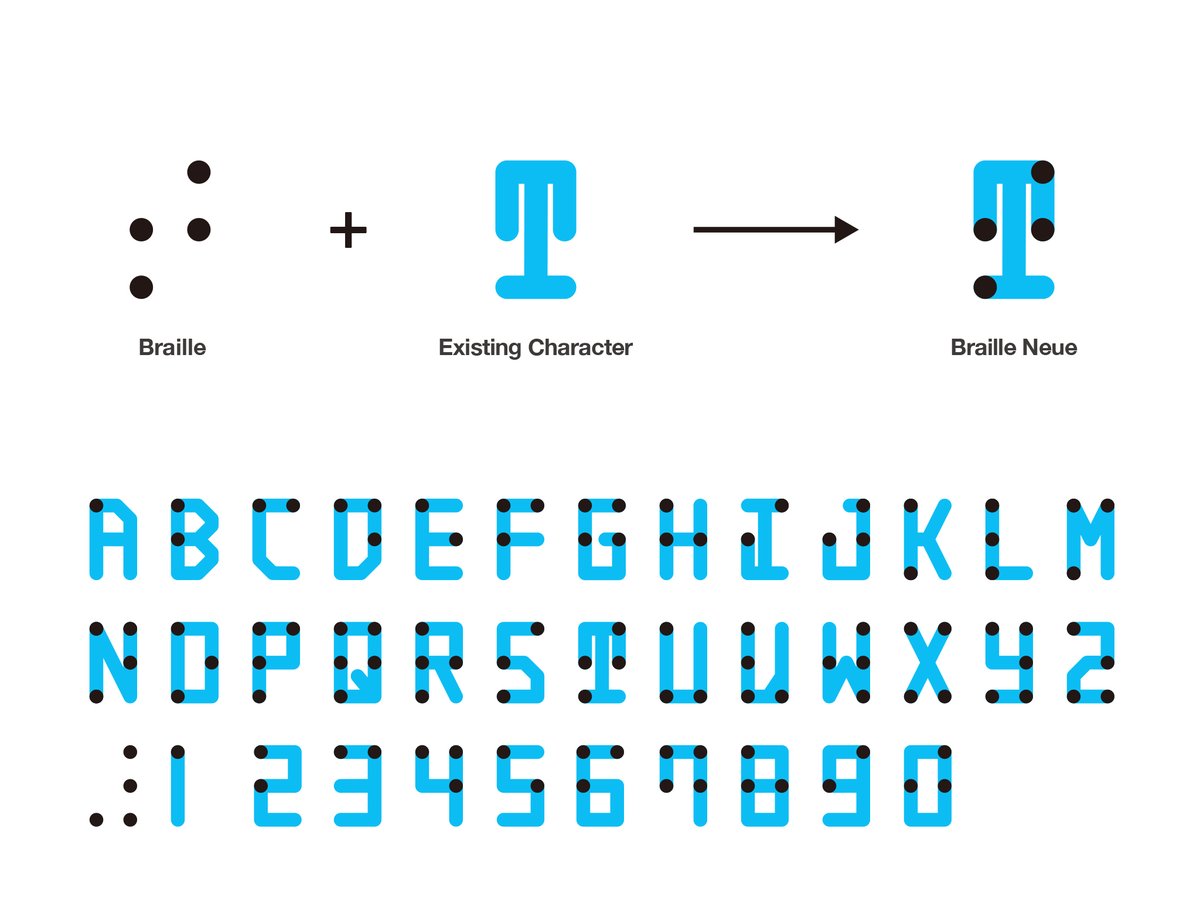
Several days ago we highlighted a twitter hashtag (#私の作品もっと沢山の人に広がれ祭り) that Japanese artists were using to share their work. It’s an exhaustive hashtag with thousands of tweets but one project that caught our eye was the “Braille Nueu” typeface created by designer Kosuke Takahashi, a universal typeface that combines braille with existing English and Japanese characters.
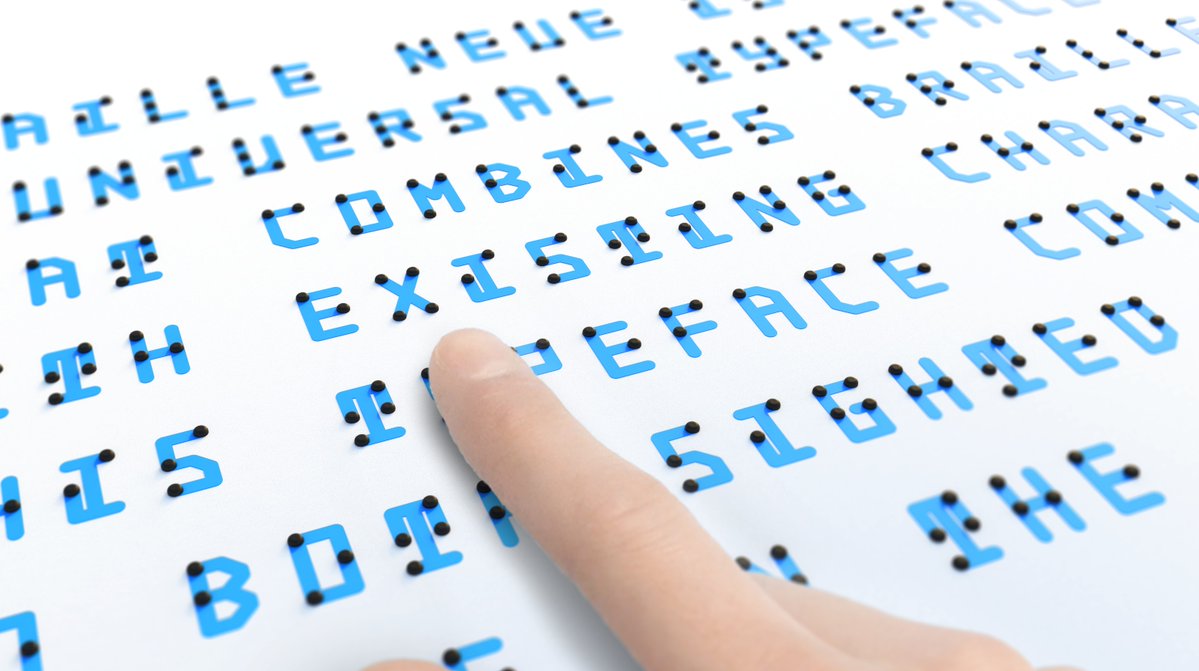
Most sighted people can’t read braille. Takahashi, a product and graphic designer working in Tokyo, identified this as a disconnect that has led to a lack of braille in public spaces which, in turn, has led to a decrease in awareness. In response, he created a new typeface that communicates both visually and physically: “Braille Neue Standard” which is for English and “Braille Neue Outline” which is for Japanese and English.
“Our aim is to use this universal typeset for Tokyo Olympics and Paralympics 2020, says Takahashi, “to create a truly universal space where anyone can access information.” Efforts have been made in the past to combine braille with the existing Latin alphabet. Takahashi builds on this work by designing a typeset that corresponds to both Latin and Japanese fonts.
In the designer’s own words, it is “a stepping stone for a sustainable and inclusive future.” You can read more about the project on his website.
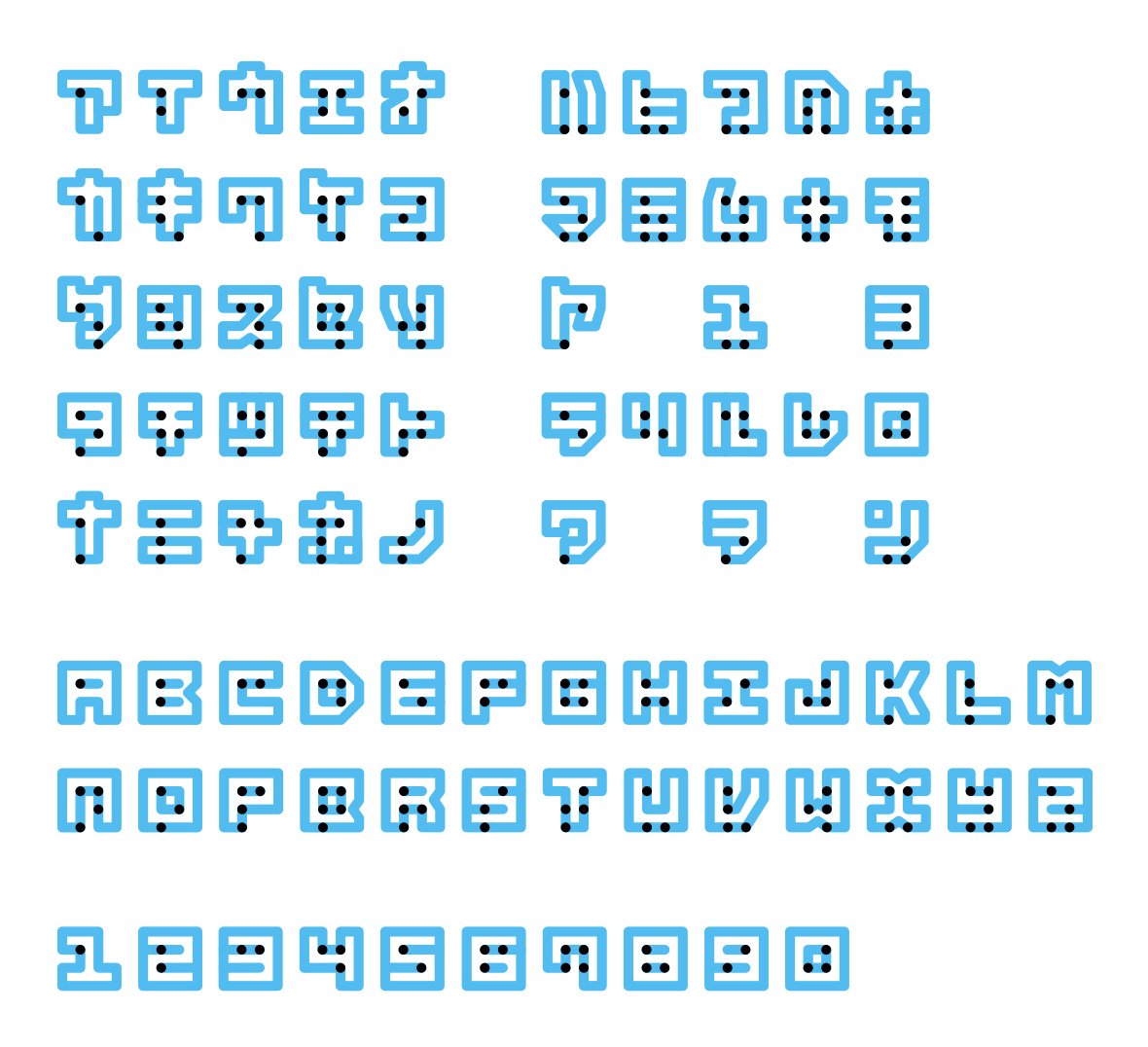
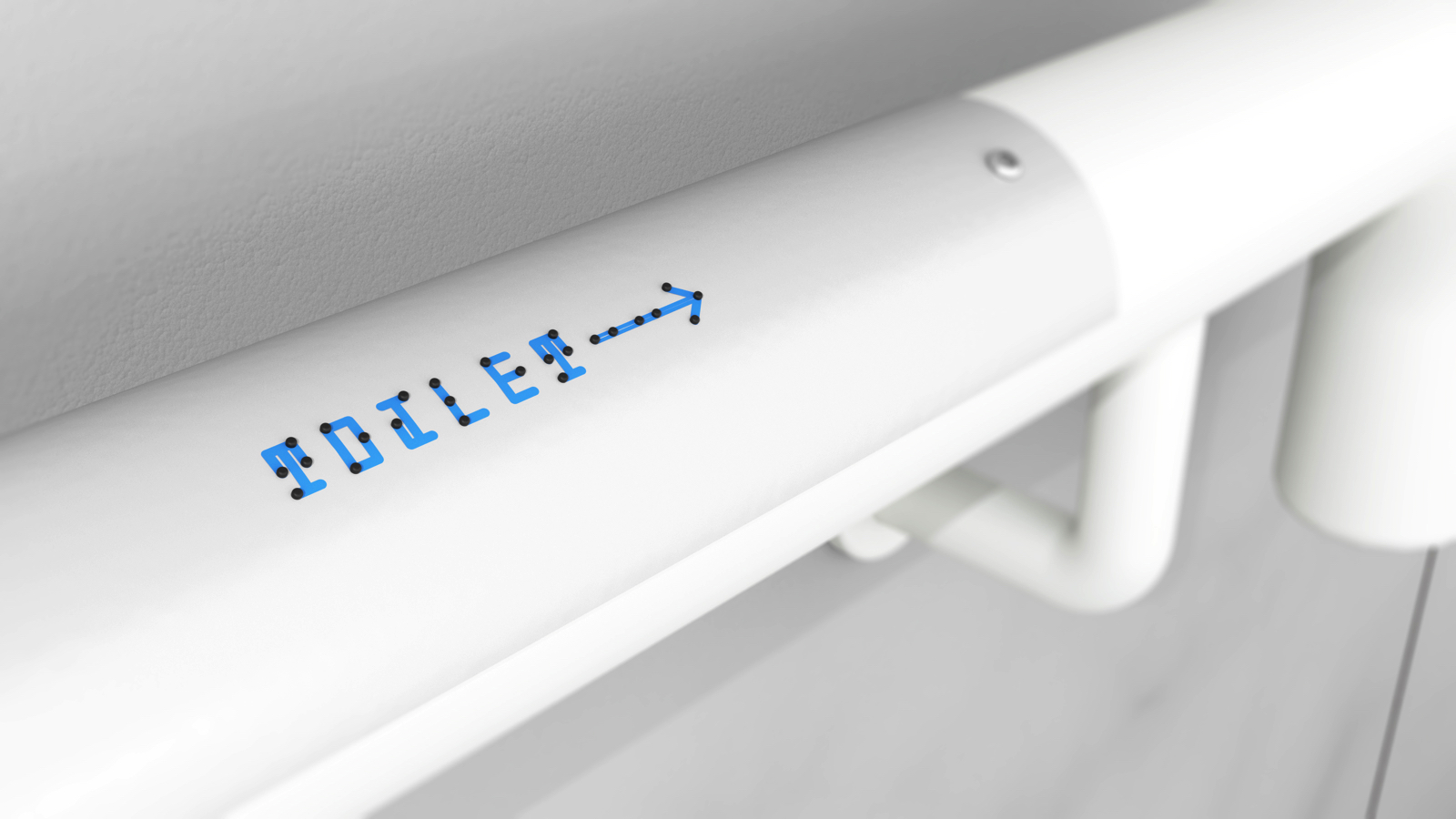





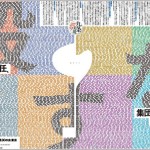


















April 3, 2018 at 7:42 pm
this is just magnificent!! thanks to these people who are working hard to develop such a great and meaningful tool. Hope they can make it with the latino goal they are looking for. Si me nececitan, ayudo!
April 8, 2018 at 11:11 am
What a fabulous idea.
Thanks to those who make the world easier for those in great need.
April 15, 2018 at 4:04 pm
This is stupid. Braille is not just “dots”–it is RAISED dots. It is a tactile means of literacy. You can’t really learn it by looking at it, you have to learn it by feeling it. It takes lots and lots of practice. Casual exposure like this doesn’t teach anything, other than it exists. This will not help blind people, because Braille is not a separate, mystery language. Anything published in Braille can be printed, and vice-versa. Knowing braille is not necessary to communicate with blind people. By aligning text to the Braille character cell, you actually impair the legibility of the text. This does the many more sighted people no favors. Additionally, Braille has to be within reach. There is no practical application of this for signs, banners, etc.
If you really want to help blind and visually impaired people, encourage them to learn Braille to begin with. More and more are choosing to not do this, instead they rely on other conveniences of modern technology. But not knowing how to read makes them illiterate. It is an alarming trend.
April 16, 2018 at 8:38 am
What’s up with I and Z anyway?